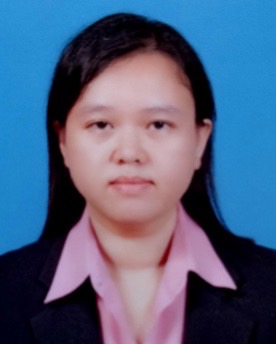Education 教育
Ph.D. Osaka University, Japan (Literature)
大阪大学博士号(文学)取得
M.A. Osaka University, Japan (Japanese Literature)
大阪大学修士課程修了(国文学)
B.A. (Honors) Chulalongkorn University, Thailand (Japanese)
チュラーロンコーン大学文学部卒業(日本語、成績優秀)
Specialty 専門分野
Japanese Literature in Nara and Heian Periods
日本古代・中古文学
Theses and works 論文及び研究業績
Thesis and Dissertation
「源氏物語における出家 」(Ph.D.)
Duties
- ผู้ช่วยคณบดี คณะอักษรศาสตร์ (2558-2561)
文学部助学部長(2015-2018) - รองคณบดี คณะอักษรศาสตร์ (2565-2566)
文学部副学部長(2022ー2023)
Research and Academic Papers and Books
- 「『源氏物語』藤壺の宮の出家」『詞林』26号(1999年10月)
- 「タイにおける日本文学」『詞林』28号(2000年10月)
- 「『源氏物語』における空蝉の出家」『古代中世文学研究論集』第三集、和泉書院(2001年1月)
- シンポジウム「留学生にとっての日本文学研究」大阪大学国際日本文学研究集会(2002年3月)
- 「『源氏物語』の出家の表現-男女の違いをめぐって」『詞林』32号(2002年10月)
- Role of the Seasons in Genjimonogatari. Journal of Arts, Jan-June 2006.
- The Role of Imagination in the Taketorimonogatari Tale. Journal of Arts, July-Dec 2006.
- Symbols of five elements in Taketorimonogatari.The Journal, Jan-June 2007.
- The Translation of “Taketorimonogatari” and “Tosanikki”. Chula Press, 2007.
- The use of colours as symbols in Tosanikki, Proceedings of the 1st National Conference of Japanese Studies Network in Thailand 2007.
- Seasons and the Death of the Characters in Genjimonogatari. Proceedings of the 2nd National Conference of Japanese Studies Network in Thailand 2008.
- The Number 8 and Japanese Myths in Kojiki. Proceedings of the Conference of East Asian Studies 2008.
- The Moon in Tosanikki. Humanities Journal, Jan-June 2009.
- Landscape Description in Shinobine Monogatari – A Study of Two love Stories. E-Proceedings of the 2nd International Conference of JSA-ASEAN, Hanoi, 2009.
- Rice and Beans in Classical Japanese Literature. Proceedings of the National Conference of Japanese Studies Network in Thailand 2009.
- Images of Animals in Japanese Myths in Kojiki. Journal of Arts, July-Dec 2009.
- 「平安文学における五行の象徴とその機能ー『土佐日記』と『竹取物語』をめぐって」『詞林47号』(2010年4月)
- Learning Japanese Myths from Kojiki. Chula Press, 2010.
- The Theory of Five Elements and the Relationship of Characters in Genjimonogatari. Proceedings of the National Conference of Japanese Studies Networks in Thailand 2010.
- History of Japanese Literature. 2011. Chula Press, 2011.
- The Translation of 21st Century Asian Family (Co-translate). Chula Press, 2011.
- The Usage of Figurative Expression in Tosanikki. JSN Journal Vol.1 No.1, Oct 2011.
- Number 3 5 and 7 in Japanese Myths in Kojiki. Proceedings of the National Conference of Japanese Studies network in Thailand 2011.
- Learning Hyakunin’isshu. Chula press, 2012.
- Animals in Japanese Poems in Hyakunin’isshu. JSN Journal Vol.3No.1, 2013.
- 13 Japanese Poems by Buddhist Monks in Hyakunin’isshu. Proceeding of the National Conference of Japanese Studies Association of Thailand 2013.
- World Outlook in Hojoki. Research Arts,Chulalongkorn University, Chula Printing House,2014.
- Plants, Animals and Number in Japanese Myths in Kojoki. Chula Press, 2014.
- Ikiryo in Japanese Literature. Proceedings of International Conference the 8th Humanities Research Forum in Thailand, 2014.
- Michitsuna no Haha’s Pilgrimages in Kagero Nikki. Proceedings of the National Conference of Japanese Studies Association of Thailand 2014.
- Translation of Ugetsumonogatari(co-translate). Chula Press, 2015.
- Pilgrimages in Sarashina Nikki. JSN Journal Vol.5 No.2 (July-Dec 2015).
- Japanese Poetry. Chula Press, 2016.
- Japanese Poems by Women in Hyakunin’isshu. JSN Journal Vol.6 No.1 (July-Dec 2016).
- Japanese Custom and Belief in the Heian Period’s Literature. Chula Printing House, 2017.
- The Imperial Poems in Hyakunin’isshu. Journal of the Faculty of Arts, Silpakorn University. Vol.39 No.2 (July-December 2017).
- Ikiryou in Japanese Literature. Chula Printing House,2018.
- The Image of Vengeful Spirit in Kibitsunokama : Comparing with the Case of Rokujo in Genjimonogatari. JSN Journal. Vol.9 No.1 (Jan- Jun 2019).
- The Role of Dreams in Sarashina Nikki. JSN Journal. Vol.9 No2 (July-Dec 2019).
- The 32 Poems of Plum Blossoms in Manyoushuu.: Comparing the Image of Plum Blossoms in Manyoushuu with Kokinwakashuu. Japanese Studies Journal. Vol.36 No.2 (July-Dec 2019)
- The Legends of Elderly Abandonment in Japanese Tales. Chulalongkorn University Press, 2020.
- The Legends of Elderly Abandonment in Japanese Tales: Roles of the Legend in the Society. Proceedings of the National Conference the 14th Humanities Research Forum in Thailand, 2020.
- The Role of the Moon in the Japanese Poems in Hyakunin’isshu. Proceedings of the 14th Annual Conference of Japanese Studies Association of Thailand, 2020.
- Book review: Images of the Japanese Parent-Child Relationship. jsn Journal. Vol.10 No.2(July-Dec 2020).
- Introduction to Japanese Literature. Chula Printing House, 2021.
- การใช้อุปมาในวรรณกรรมโฮโจกิ. jsn Journal 11, 2 (ธันวาคม 2564): 19-31. TCI1
- ตำนานเทพญี่ปุ่นจากบันทึกประวัติศาสตร์นิฮนโฌะกิ. กรุงเทพฯ : สำนักพิมพ์จุฬาลงกรณ์มหาวิทยาลัย. พิมพ์ครั้งที่ 1. ธันวาคม 2564.
- ตำนานเจ้าหญิงไม้ไผ่จากดวงจันทร์. กรุงเทพฯ : สำนักพิมพ์แห่งจุฬาลงกรณ์มหาวิทยาลัย. พิมพ์ครั้งที่ 1. ธันวาคม 2565.
- บทบาทของเสียงในตำนานเทพญี่ปุ่นโคะจิกิและนิฮนโฌะกิ. การประชุมวิชาการระดับชาติเวทีวิจัยมนุษยศาสตร์ไทย ครั้งที่ 15. มหาวิทยาลัยราชภัฏสวนสุนันทา. มีนาคม 2566. หน้า 623-639.
Current Research Topic 現在の研究課題
古事記と日本書紀における日本神話
Japanese Myths in Kojiki and Nihonshoki
Contact 連絡先
Tel: 0-2218-4751
Fax: 0-2218-4740
E-mail: attaya_s@hotmail.com
